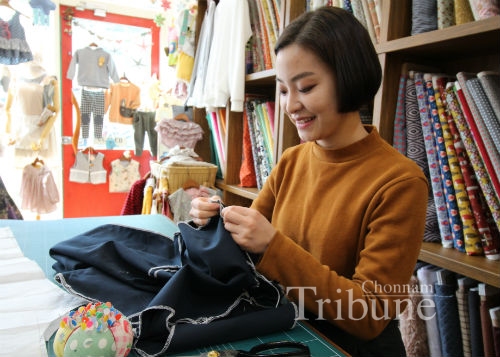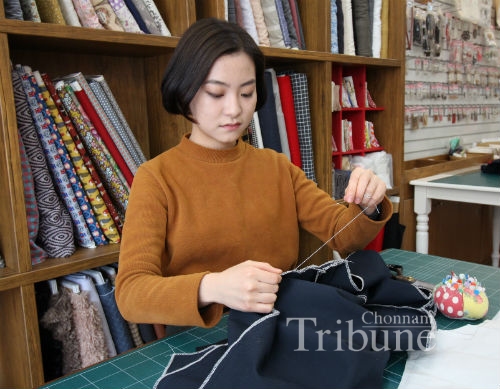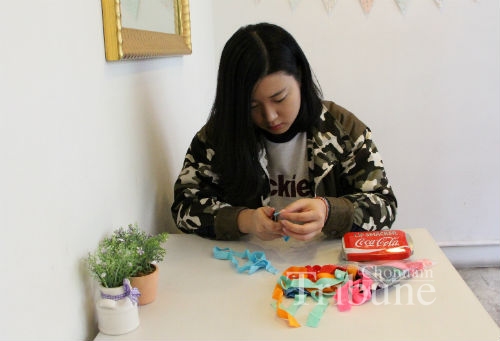Becoming a Trend in Korean Society

You probably have heard of the term ‘Do it yourself’, also known as DIY, which is mainly used for a behavior where people who create or produce things for themselves without the help of paid experts. DIY has emerged as a general trend for this culture and offers an alternative to the modern consumer culture in Korean society. DIY culture was historically a movement centered on punk rock, new age music, and anti-capitalism but its ethic seeks to empower individuals and communities at the same time through taking responsibility for your life and pursuing positive action in a society.
Once considered a subculture that is a way of life of only a group of people within which a culture follow, now DIY culture permeates our daily lives as well as fashion, beauty, crafts and many others. The fascinating part of this culture is that it covers literally everything from recycling to transportation. For this reason, it still goes strong while other subcultures are getting weakened. What are some other reasons that makes DIY keep going? The Chonnam Tribune looked deeper into the college-level DIY culture and explored the reasons why students prefer the culture.

DIY Saves Your Budgets
University students are always short of pocket money but need so many things. You also do not have enough in their bank account to cover what you want to do. DIY helps you to reduce your expenses. In order to understand the reason, we need to know the basic principles of retail economics. A seller will sell a certain product through many processes of distribution. When the product finally reaches retail shops, customers need to pay for the service of the process. The price of the product is higher than the prime cost, of course, but if a person does it by himself, all he needs to pay is only the materials.
One of the examples of DIY culture, backpacking, is now a major trend among university students. An Jun-tae (Graduate, Dept. of Automotive Engineering) is one of them who went backpacking through Europe. Taking a trip to somewhere across the ocean takes a lot of money no matter how much you try to minimize the expenses. So what students can do to reduce their trip expense is to make a plan for themselves. An said that self-planning trips are sure cheaper than using travel agency’s packages. “At first I looked at travel packages because I did not like setting everything up myself, but the price of package was too expensive. I spent about three million won for three-week trip but the cost would be more expensive if I had chosen the agency’s package tours. It took time and effort but at least I could afford that rather than paying lots of money.”

Self-satisfaction Is All that Matters
It would be better to have something at low price with joy. Self-satisfaction is also one of the main reasons to make DIY culture still strong. You can make anything the way you want and once you feel the pleasure from completing the product, you cannot stop it. Like many other female students, Lee Su-jeong (Sophomore, Dept. of Chemistry) likes to get a manicure by herself. “I just focus on what I am doing when I paint my nails using manicure equipment. It helps me refresh myself and when I am done, I am satisfied with my work. Sometimes I paint my friends’ nails and when they give me compliments, I feel flattered. It is fun to paint my nails and the more I practice, the better I get, and this is why I keep doing self-manicuring. It is amazing as my hands look pretty. All I need is just the nail polish few tools, and my hands.”

Most people think a great advantage of DIY is its low cost. However, personal motivations make people go beyond the financial issues. Baek Geum-hwa (Sophomore, Dept. of Clothing and Textiles) often makes her own clothing. In order to make one, she needs to buy certain fabrics for lining and the upper part of for her clothes. The cost of purchasing all the materials is actually more expensive than buying manufactured goods from a clothing store. “What I love the most about DIY is that I am in charge of every process in it. I wanted to be a designer since I was in an elementary school. I feel like that I am getting close to my dream when I am designing, drawing and using a sewing machine. It is true I spent much time and money but it is worth the effort and expenses involved.“ The inducement to avoid being a standard encourages people to make things in their own way. Even if the finished work is not as good as manufactured goods, it is still priceless. “It means more to have something that exists and is the only one in the world. You cannot get anything like what I made in the world,” Baek added.

It Is about Getting & Sharing Information
The best contributor to DIY culture is the technological development of the internet. Nowadays, anyone can look for any kind of information such as the materials that are needed or the process on the internet. Not only getting the information, you can share what you made or how you made it on your web blog to share the information with people. Social media such as YouTube also urge a great number of people to follow what they see. Besides that, people can order what they need through the internet with just few clicks. Jeong Seol-hee (Graduate, Dept. of Communication) likes to make Misanga and Kumihimo, a bracelet form of braiding strands of color silk or cotton. She said she gets various designs and information on materials on the web. “I sometimes visit foreign websites because there are more to find than just Korean. The best thing about the internet is you can search anything and the sphere of search has no limits. I buy materials through the internet as well.” She also runs a blog and uploads her works sometimes.
Sometimes people like Kim Eun-suk (Sophomore, Dept of Plant Biotechnology) share their talents with other people. She is doing topiary, clipping or trimming of plants into decorative shapes and she helps group of people who want to try self topiary or even give lectures of it. "I am always up for helping people who wants to get to know topiary. If they pay for the materials, I teach them how to do it. I want more and more people get to know how fun topiary is," said Kim.

DIY Is More than ‘Yourself’
As DIY culture promotes the idea that anyone is capable of anything and with the help of social broadcasts, books and internet, the concept of individualism seems rampant in the term. All you need are the things that you need such as tools and a laptop and you do not need anyone else because you will be doing it for yourself! Sometimes people make a group purchase of materials or donate what they have extra to others.
As mentioned above, personal motivations such as economic benefits and self-satisfaction could be the main reason for expansion of the DIY culture. Along with the personal motivation, the social motivation of sharing information via SNS and internet blogs also encourages people to try. Developed internet technology would be the main reason for it because now everyone can search for anything. Yes, the concept of DIY takes root in 'doing it yourself' but when you think twice, sharing take big parts of DIY culture. You are getting information from the internet that someone posted and watching such as a self-hair styling YouTube video that someone recorded to share with others. All of us should look beyond the DIY concept and enjoy the sense of sharing!
By Kim Hae-in, Editor-in-Chief

